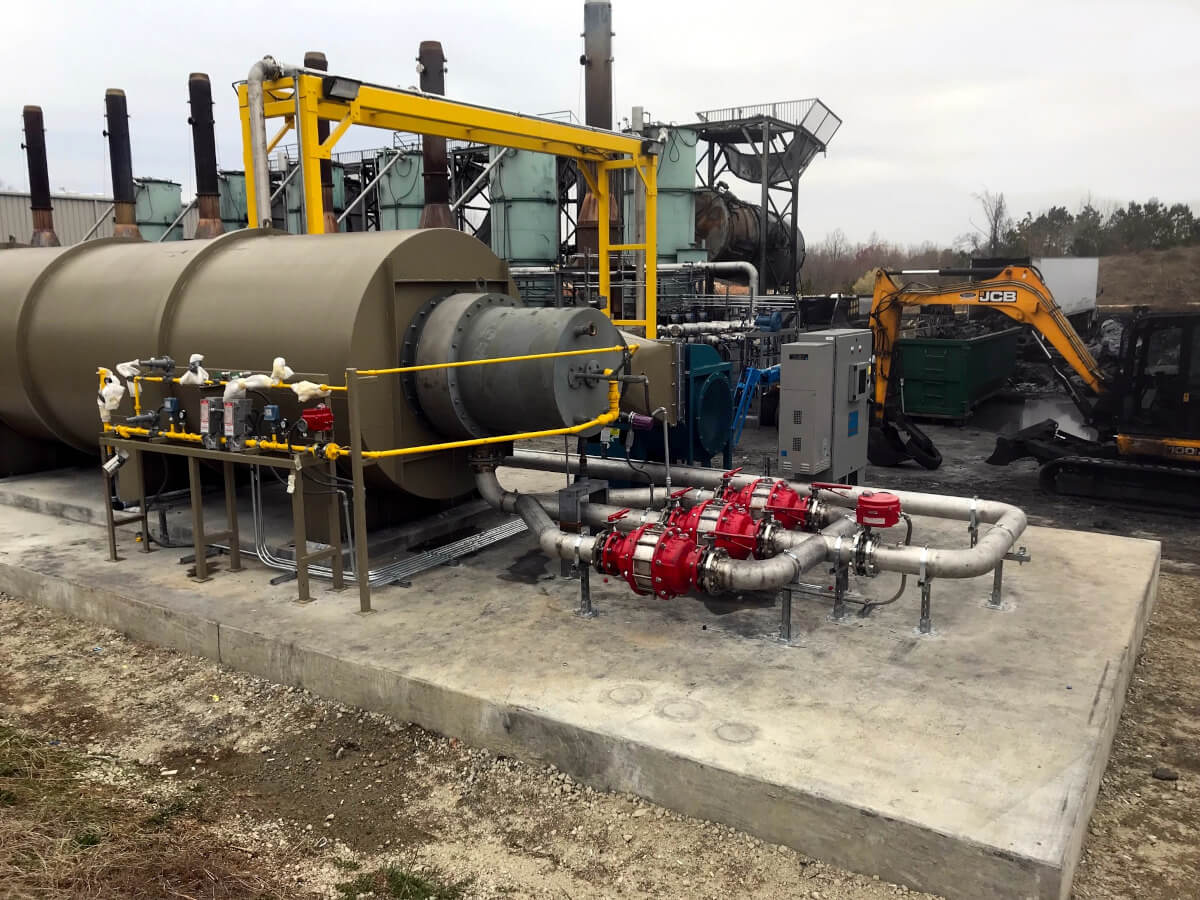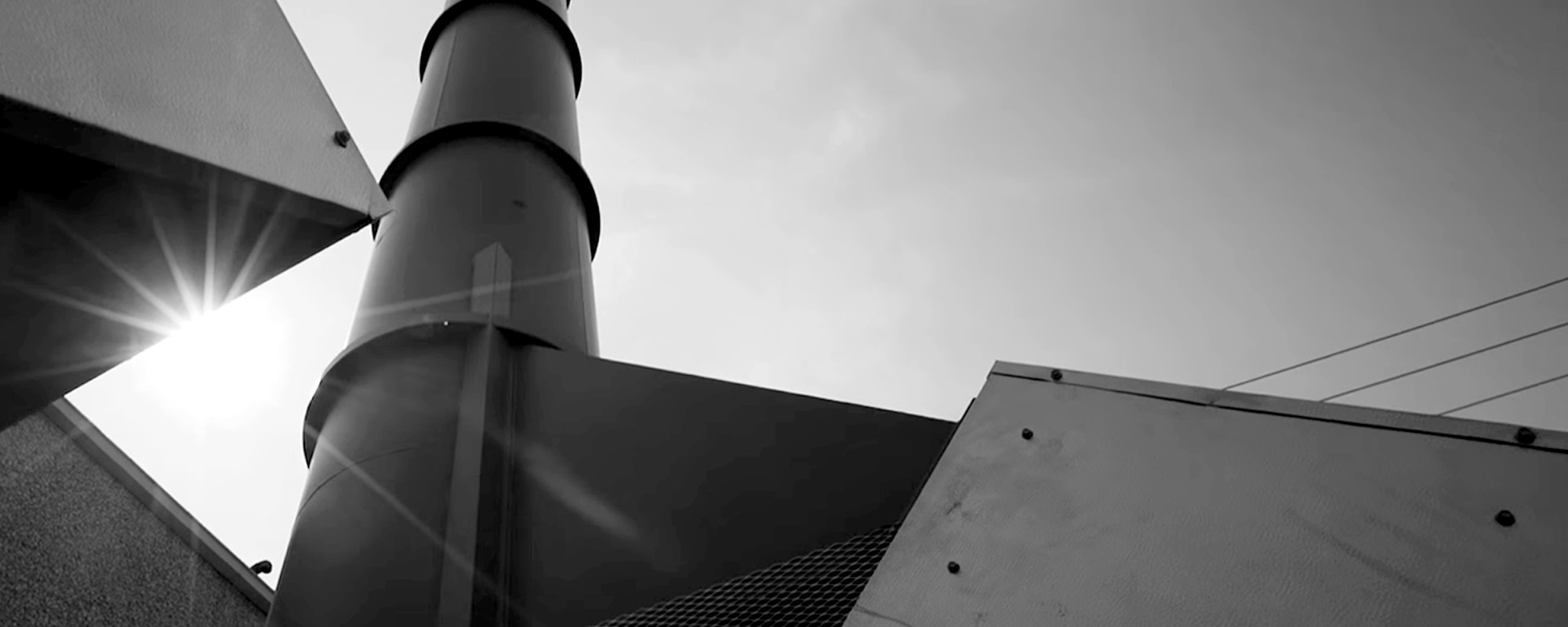Horizontal Enclosed Flare Abates Hydrocarbons from Recycling Process
- Pollutant: Volatile Organic Compounds (VOCs)
- Industry: Recovery & Recycling
- System: Enclosed Flares
A recycling facility installs a Horizontal Enclosed Flare by Pollution Systems to control its hydrocarbon (total & non-methane) emissions and streamline the process.

Synopsis
A large Recycling Facility in North Carolina wanted to consolidate its waste streams of nine (9) Phase Separation System reactors into one (1) thermal oxidizer for hydrocarbon abatement.
Initial Operating Issue
The ensuing abatement system needed to operate in a fully automated manner while providing a 99% (or greater) total hydrocarbon and non-methane hydrocarbon destruction rate. The system’s uptime and need for low maintenance were crucial for allowing continuous on-stream operational service. The customer also specified that a cost-effective system design, minimal operator interface, and meeting stringent safety requirements were also very important criteria to consider when selecting an air pollution control technology.
Proposed Solution
The engineering design team at Pollution systems reviewed the facility’s process application and recommended the installation of an Enclosed Flare. Enclosed Flares are proven technologies for oxidizing various pollutants such as VOCs and hydrocarbons. These systems operate over a large process window and can safely handle fluctuations in waste stream flow rates and compositions while providing simple and reliable operation.
The Technology: How it Works
Enclosed Flares provide a simple, straightforward means to ensure compliance while being one of the least maintenance-intensive of all air pollution control technologies and exhibiting the highest on-stream time/reliability.
Configured to accommodate high-energy process discharge streams with excess air for combustion, these systems can provide most of the necessary temperature/energy for destruction with minimal additional primary fuel. Thus, making them cost-effective to operate.
Implementation
Pollution Systems designed an Enclosed Flare system, Model #HCEF-18, that was appropriately sized to accommodate the plant’s waste gas stream and to meet or exceed a +99% or higher total hydrocarbon and non-methane hydrocarbon destruction rate. The system was fully automated for ease of startup and operation. Since this facility wanted a system with little downtime, Pollution Systems built the Enclosed Flare as a horizontal system which provided easy access and thus shortened the time needed for maintenance performance.
Results
Pollution Systems completed the Horizontal Enclosed Flare System within the expected time frame and within budget. The Enclosed Flare successfully abated the hydrocarbon and non-methane VOCs from the nine (9) waste streams sent to the flare for treatment. Overall, the customer was very happy with the cost, ease of operation, safety, and ≥99% DRE of the system. Since the completion of this project, they have contacted Pollution Systems about building two more Enclosed Flare Systems to handle their plant’s future site expansion and anticipated increase in production capacity.
Related Case Studies
Enclosed Flare Abates Waste Acid Gas for Midstream Amine Facility
A midstream processor needed an air pollution control solution that could intermittently treat their waste acid gas exhaust during plant shutdowns. The amine facility used an Enclosed Flare to successfully abate these pollutants.
- Pollutant: Volatile Organic Compounds (VOCs)
- Industry: Midstream
- System: Enclosed Flares
Sterilization Facility Cuts Emissions With Catalytic Oxidizer System
A medical sterilization facility needed to cut ethylene oxide (EtO) emissions from their process stream. Our Catalytic Oxidizer was tailored to their application and was able to offer a >99% DRE.
- Pollutant: Hazardous Air Pollutants (HAPs)Volatile Organic Compounds (VOCs)
- Industry: Ethylene Oxide Treatment
- System: Catalytic Oxidizers

